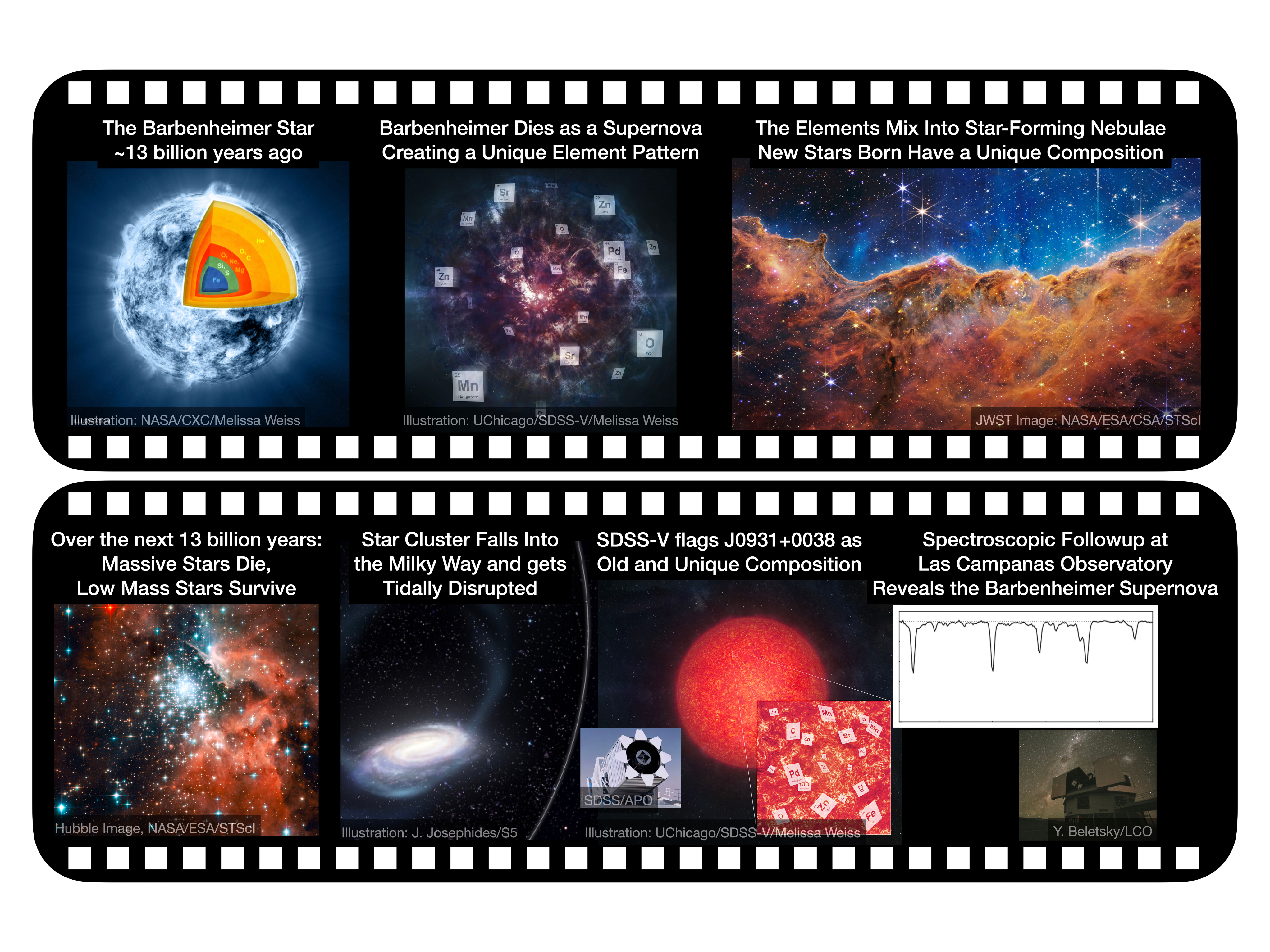Astronomers have detected a star with such curious composition they conclude it must have been enriched by a supernova that didn’t accord with our current understanding of exploding stars. Their efforts to reconstruct this event reveal we’ve probably been missing something big about the behavior of the first generation of giant stars.
In 1999, the Sloan Digital Sky Survey (SDSS) detected a giant red star at a distance of 13,000 light-years that was given the label J0931+0038. The star was unusual in its color and location in the galactic halo, but not exceptionally so, leading to it being ignored for more than 20 years before the SDSS got around to taking its spectrum last year.
“As soon as I saw the spectrum, I immediately emailed the rest of the team to talk about how to learn more,” Dr Alex Ji of the University of Chicago said in a statement.
The first stars were nothing but hydrogen and helium – but they produced heavier elements, which have been incorporated into subsequent generations. Certain elements tend to accompany each other. For example, the total amount of heavier elements in a star is often summarized on the basis of the ratio of iron to hydrogen, because the iron gives a decent starting point to estimate the abundance of everything else.
However, sometimes, stars don’t follow the rules, and J0931+0038 is an extreme example. All the elements with odd numbers on the periodic table are scarce there compared to the even-numbered ones on either side. There’s a peak in abundance of elements just above iron in atomic weight like nickel and zinc, compared to those just below like titanium, and also a lot of heavy elements like palladium.
“We sometimes see one of these features at a time,” said Professor Jennifer Johnson of Ohio State University, “But we’ve never before seen all of them in the same star.”
Despite its likely great age, J0931+0038 would only have produced helium and perhaps a little carbon itself, so the other elements are a legacy of the supernova whose products make it up. To produce such an unusual combination, this must have been an extraordinary explosion. In a nod to last year’s popular culture sensation, the SDSS team nicknamed it the Barbenheimer Star. After all, the subject of one of these movies engages in a lot of element creation, albeit through fission rather than fusion, and the other film is quite the spectacle.
Now the quest is on to identify the nature of the Barbenheimer star. The team thinks it must have fallen into a mass gap, with a mass 50-80 times that of the Sun. It had been thought stars that massive would collapse directly into black holes, rather than undergoing supernova explosions – but so far, no one has been able to explain J0931+0038 any other way.
“Amazingly, no existing model of element formation can explain what we see,” Dr Sanjana Curtis of the University of California, Berkeley said. “It’s not just ‘ok, you can tweak something here and there and it’ll work out – the whole pattern of elements almost seems self-contradictory.”
“We think it’s possible it could have been energetic enough to blow up an entire galaxy by itself, though a small galaxy,” Ji said in a different statement.
“The Universe directed this movie, we are just the camera crew,” said Dr Keith Hawkins of the University of Texas at Austin. “We don’t yet know how the story will end.”

Seven frames from the 13 billion year Barbenheimer star movie, and its sequel in the star Jo931+0038 and its discovery by us
Image and illustration credits: NASA, ESA, CSA, StSci, University of Chicago, SDSS-V, S5, Melissa Weiss, James Josephides, Yuri Beletsky
Although theoretical physicists will no doubt put great effort into modeling the sort of explosion that could produce this combination of elements, the key to resolving the mystery is probably to find similar stars. Ideally, we might catch a Barbenheimer-style supernova in the act, but more stars with compositions similar to J0931+0038 would also help.
Stars with masses more than 50 times that of the Sun exist today, but they’re very rare. However, they are thought to have been more common in the early universe when the Barbenheimer star formed, so there should be more stars like J0931+0038 out there created from their deaths.
Consider: centuries from now, when the two massive cinematic hits are forgotten (let alone their simultaneous release), astronomers may still be referring to a class of rare objects as Barbenheimer stars, with few knowing why.
The discovery and preliminary analysis is to be published in the Astrophysical Journal Letters, preprint on ArXiv.org
Source Link: “Barbenheimer Star” Loaded With Heavy Metals Is Unlike Anything Scientists Have Seen Or Expected